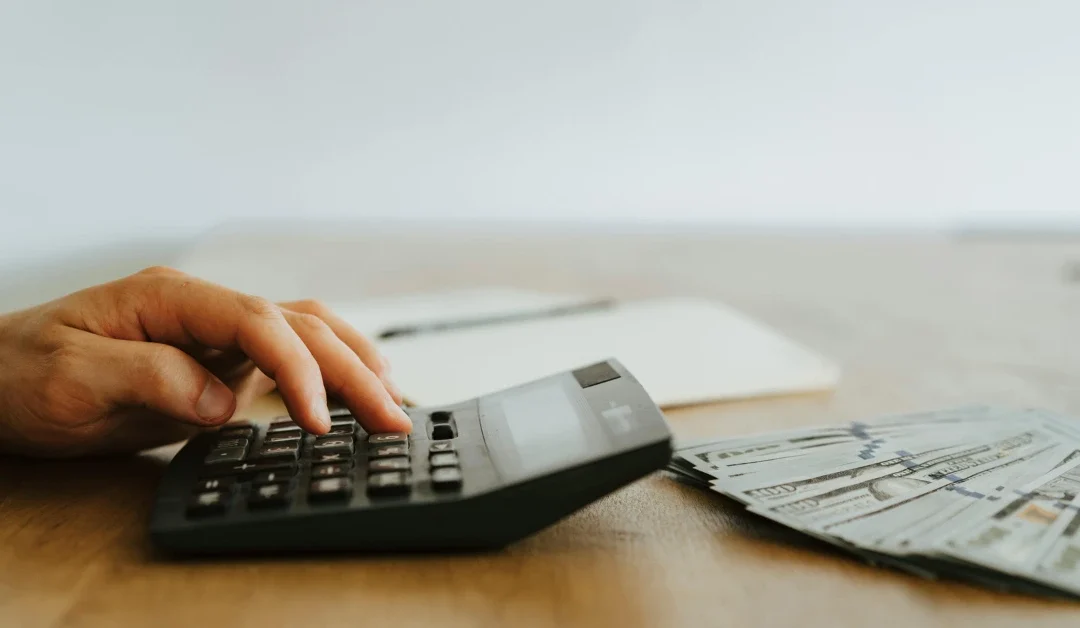Want to build steady, passive income—and even replace your 9-5—with rental properties that pay you every single month?
Then this guide is for you.
As a seven-figure real estate investor who retired at 31 from my pharmacist career, I’ll walk you through exactly how I built a portfolio generating multiple six figures in passive income – and how you can do the same.
You’ll learn:
- How to find high-cash-flow rental markets that most investors overlook
- My exact process for analyzing deals like a pro (even if you’ve never invested before)
- The costly rookie mistakes I made so you don’t have to
- My proven blueprint for buying properties that actually pay you from day one
Let’s dive in.
Key takeaways:
- A good cash-flowing rental brings in 10–15% of the property price annually, after expenses.
- Your success depends on your market research, deal analysis, and clear investment goals.
- Student housing and house hacking are smart strategies for beginners who want to start strong.
Steps to buy a cash flow-positive rental:
- Define investment goals
- Set a budget
- Research the right market
- Choose the right property
- Analyze potential cash flow
- Get financing
- Evaluate the property
- Close on the property
- Manage your property
Let’s start from the beginning…
What is a good cash flow for a rental property?
A good cash flow for a rental property is at least $100–$300/month in positive cash flow per unit or $200–$500/month for single-family homes.
At its core, a cash flow-positive rental property earns more than it costs to operate it. And the formula to calculate your rental property cash flow is simple:
Monthly rental income – Monthly expenses = Cash flow
Example:
- Rent: $5,000/month
- Expenses: $3,000/month
- Cash Flow = $2,000/month = $24,000/year
But raw cash flow doesn’t tell the whole story. You also need to track your return on investment.
Many investors aim for at least an 8–12% cash-on-cash return. If you can find deals that return 15% or more, you’re in exceptional shape.
If you bought the example property above for $240,000 in cash, your cash-on-cash return would be 10% ($24,000 ÷ $240,000).
Now you know what a good cash flow looks like. But how do you find cash flow-positive rental properties? Let’s take a look.

How to buy a cash flow positive rental property in 9 simple steps
Let me show you exactly how to find, analyze, and purchase properties that put cash in your pocket from day one.
1. Define investment goals
What are you trying to achieve with real estate investing?
Your goals shape everything—from what type of property to buy to which market you invest in.
Ask yourself:
- Do I need immediate positive cash flow, or can I wait for appreciation?
- Am I looking to replace my salary entirely or supplement my income?
- What’s my timeline for financial independence?
- How hands-on do I want to be with property management?
Real-world example: When I started investing, my clear goal was to replace my 9-5 income. This laser focus helped me reject “almost good” deals and hold out for properties that aligned perfectly with my cash flow requirements. And by buying one property per year, I was able to build a multiple six-figure portfolio that allowed me to retire from my job at the age of 31.
Here are the exact steps I took to get there:
2. Set a realistic budget
Many new investors underestimate the true costs of rental property acquisition. Here’s what you need to budget for:
- Down payment: Typically 15-25% for investment properties (which is higher than the 3-5% you might put down on a primary residence, unless you do a “house hack”)
- Closing costs: Approximately 2-5% of the loan price
- Inspection fees: $300-600 for standard inspections (more for specialized assessments)
- Renovation reserve: Varies significantly, often around 5% of purchase price for immediate repairs or updates
- Operating reserve: 3-6 months of expenses to cover vacancies or unexpected costs
For example, on a $250,000 property, you should have approximately:
- $50,000 for down payment (20%)
- $7,500 for closing costs (3%)
- $500 for inspections
- $12,500 for renovation reserve (5%)
- $6,000 for operating reserve
That’s a total of $76,500 needed before your first tenant moves in—significantly more than most beginner investors anticipate. Keep in mind this number is conservative, and you may pay less depending on the property you purchase.
With the right strategies, you manage your budget well and make positive cash flow from the start. And the first step is to find the right property, which we’ll look at next.
3. Research high-performing markets
Not all real estate markets are created equal when it comes to cash flow potential. Look for these indicators of a cash flow-friendly market:
- Job growth: Areas with diverse employment opportunities and growing industries
- Population growth: More people means more potential tenants
- Affordability ratio: The ratio between average property prices and average rents
- Landlord-friendly laws: Regions with reasonable regulations for property owners
- Low property taxes: Areas with lower tax burdens preserve more of your cash flow
Pro tip: While many investors focus on major metropolitan areas, I’ve found exceptional returns in college towns and mid-sized cities where property prices are moderate but rental demand remains strong.
4. Choose the right property type
Different property types offer varying cash flow potential. Here’s my ranking based on personal experience:
- Student housing: By far my favorite strategy. Renting by the bedroom in college towns can increase your gross rental income by 30-50% compared to traditional single-family rentals.
- Multi-family properties: More units under one roof means lower per-unit maintenance costs and built-in diversification against vacancies.
- Single-family homes: Easier to manage and finance, but typically offer lower cash flow percentages than the options above (if rented to a single tenant).
- House hacking: Living in one room or unit at a property while renting out the rest—perfect for beginners with limited capital.
For example: One of my first properties was a student rental. The property was estimated to rent for $2,000 per month as a traditional single-family home. But I used my student housing formula and generated $3,250 a month by renting every bedroom at $650/month–that’s $1,250 more in cash flow than I would’ve been able to ask for if I had rented it to a single tenant.
5. Analyze the property’s cash flow
Successful investors run the numbers meticulously before making offers. Here’s my formula for accurate cash flow analysis:
Cash Flow = Rent – (Mortgage + Taxes + Insurance + Repairs + Property Management)
Monthly income:
- Base rental income
- Additional income (parking, laundry, storage, etc.)
Monthly expenses:
- Mortgage payment (principal and interest)
- Property taxes
- Insurance
- Property management (up to 8-10% of rent)
- Maintenance expenses reserve (5% of rent)
- Capital expenditures reserve (5% of rent)
- Utilities (if not paid by tenants)
- HOA fees (if applicable)
- Vacancy reserve (5-8% of rent)
Let’s take my own example, a property in Ohio:
4-bedroom rental property:
Purchase price: $210,000
Down payment: $42,000 (20%)
Monthly rent: $3,790 (we converted this 4-bedroom property into a 6-bedroom property)
Monthly expenses:
– Mortgage (including property tax and insurance): $1,336
– Property management: $260
– Maintenance reserve: $130
– CapEx reserve: $130
– Utilities: $0 (tenant-paid)
– Vacancy reserve: $130
Total monthly expenses: $1,986
Monthly cash flow: $1,804
Annual cash flow: $21,648
Cash-on-cash return: 51.54%
This property exceeds our 10-15% target with nearly 19% cash-on-cash return—and that’s not counting tax benefits or appreciation.
For more, take a look at my video here on how to determine if a property cash flows:
6. Secure the right financing
Investment property financing differs significantly from residential mortgages. Here are your best financing options:
- Conventional loans: Typically require 20-25% down payment but offer the best interest rates (house hacks require a 3.5% down payment)
- Portfolio loans: More flexible qualifying criteria but higher interest rates and fees
- Private money: Higher cost but faster closing and fewer qualification hurdles
- Seller financing: Can offer creative terms but requires a motivated seller
- Home equity: Leveraging equity from your primary residence or other rental for more investment properties
- Debt Service Coverage Ratio loans: Doesn’t require W2 income and is based on the estimated rental income the property could make or the rental income it currently makes
Tip: Always compare loan requirements, interest rates, terms, and cash reserve requirements before choosing a lender.
7. Do a thorough property evaluation
Never skip this critical step. A property that looks perfect on paper can hide expensive problems that destroy your cash flow projections.
Beyond the standard home inspection, I always recommend:
- General home inspection: Identifies most visible issues
- Specialized sewage lateral line inspection: As I learned the hard way, sewer line repairs can cost $10,000+ and are rarely visible during standard inspections
- Roof certification: Roof replacements can easily cost $15,000-$25,000
- HVAC professional assessment: Systems nearing end-of-life can drain your profits quickly
- Electrical panel inspection: Outdated panels may require mandatory upgrades
- Pest inspection: Infestations can be costly and drive away quality tenants
- Foundation evaluation: Even minor issues can signal major expenses ahead
My own lesson: On my first property, I skipped my thorough inspections and ended up spending $30,000 on repairs and major system replacements.
8. Negotiate and close on the property
The purchase price significantly impacts your long-term cash flow. Here’s how I’ve successfully negotiated discounts on every property I’ve purchased:
- Leverage market timing: In high-interest rate environments, seller motivation increases dramatically because there are less buyers available
- Present inspection findings strategically: Use inspection results to negotiate seller credits and cash back rather than requesting repairs
- Offer closing certainty: Sometimes a guaranteed close is worth more to sellers than a higher price
- Research property history: Properties that have been listed multiple times or have been vacant show higher seller motivation
For example: I once found a home that had been on the market for almost 90 days – meaning the seller was likely getting desperate. I offered them $100,000 under the asking price and to my pleasant surprise, I got an $83,000 reduction. That’s exactly why negotiating can be so powerful!
Check out this video for more details:
9. Manage your property efficiently
Property management can make or break your cash flow. You have three options:
- Self-management: Highest potential cash flow but requires significant time investment
- Professional management: Reduces time commitment but costs 8-10% of gross rents
- My “tenant empowerment” hybrid approach: The strategy that allowed me to self-manage my properties with minimal time investment and scale to multiple properties while working full-time – without hurting my cash flow
The tenant empowerment approach involves:
- Setting clear expectations during tenant onboarding
- Creating detailed systems for maintenance requests
- Empowering tenants to handle minor issues directly with service providers
- Building relationships with reliable contractors who can work without constant supervision
- Using technology for rent collection, communication, and property monitoring

FAQ: Buy a cash flow-positive property
What type of rental property is the best for cash flow?
Student housing delivers the highest cash flow potential of any residential rental strategy I’ve implemented. By renting on a per-bedroom basis, you can easily increase gross income by 50-200% compared to single-family rentals. This strategy was instrumental in helping me retire at 31.
The key is targeting properties within walking or biking distance of major universities, with layouts that accommodate multiple bedrooms and adequate bedroom-to-bathroom ratios.
What are the best places to buy cash flow properties?
Invest in areas with good job growth, top universities (if you’re investing in student housing), and high-paying jobs. To get the best cash flow on rental properties, offer the kind of housing your ideal tenants want.
What are the 2% rule and the 50% rule?
The 2% rule suggests your monthly rent should be at least 2% of the purchase price. For a $250,000 property, this means $5,000 monthly rent.
The 50% rule means that you plan for 50% of your rental income to go toward operating expenses, not including your mortgage. The rest covers your loan and gives you profit.
Your next steps to rental property success
Now you know exactly how I built a seven-figure real estate portfolio that generates multiple six figures a year in passive income. With these nine proven steps, you have the blueprint to buy cash flow-positive rental properties that can eventually replace your salary—just as they did for me.
But to get there, you need to take action.
Want personalized guidance to accelerate your real estate investing journey?
I’ve helped dozens of new investors acquire their first (and second, and third) cash flow-positive properties. Click here to work with me directly and avoid the costly mistakes most beginners make.


